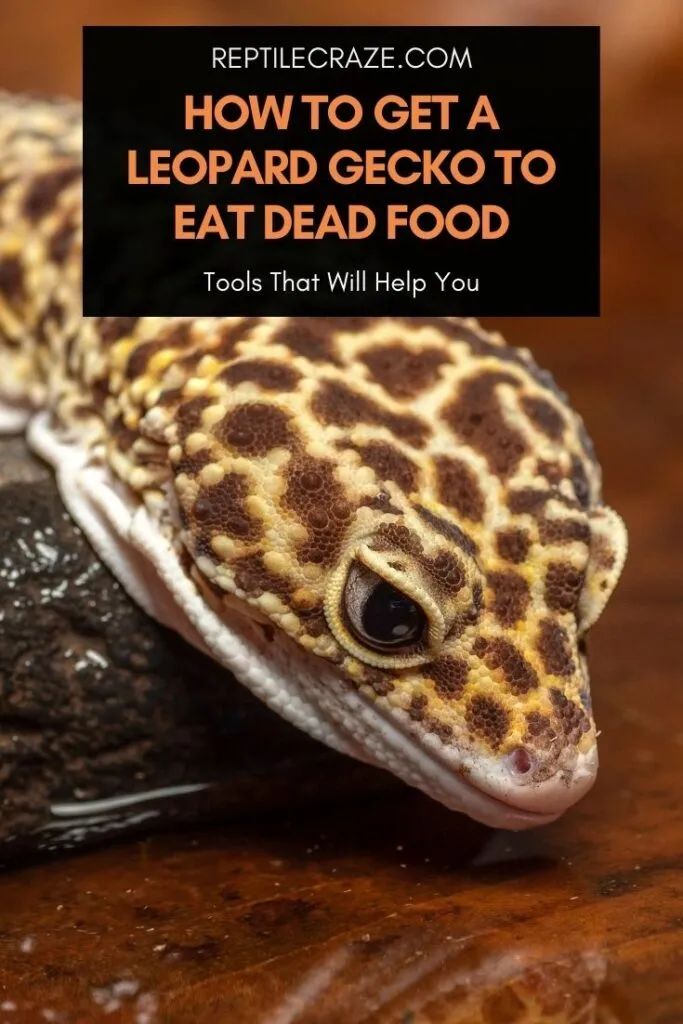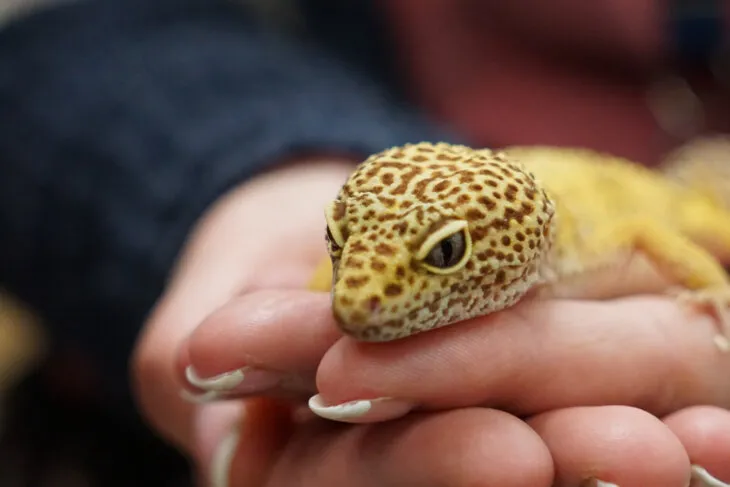
Let’s face it; leopard geckos can sometimes be pretty picky eaters! As a reptile owner, you’re undoubtedly familiar with this, and you’ve done your best to ensure your leo is getting the nutritional variety and enrichment it needs through its diet.
But in a pinch, you may need to feed your leopard gecko dried insects – however, they don’t always want to eat them! So how can you make these more appealing to your leopard gecko?
You can encourage your leopard gecko to eat dead, dried insects by changing up your feeding methods, such as using a vibrating
If you want to learn in detail how to make dried insects more appealing to your leopard gecko, keep reading!
Table of Contents
How To Make Your Leopard Gecko Eat Dead Food
So let’s have a look at what you can do to make your leo eat dead insects and what kind of tools you’ll need for that!
Vibrating food dish
A vibrating
Since leopard geckos are triggered by motion, the vibrations make dried insects look much more appetizing!
The dish has a removable and easy-to-clean rubber platform for placing dried insects on. In addition, it is remote-controlled, allowing you to turn the dish on and off without interrupting feeding time.
If you’re interested in purchasing one, you can grab the Exo Terra dish here!
While it works in theory, some reptile owners have reported that the dish is noisy, scatters
On the other hand, some report their reptiles are entirely uninterested in the dish, and others say it works great! If you’re dead-set on feeding dried insects, it might be worth a try, but the reviews are mixed – I’ll let you decide for yourself!
Here is how that dish looks in action:
Hand-feeding or feeding tongs
While some owners enjoy letting their leopard gecko go after live prey in their enclosure, not all geckos are avid hunters.
This problem is only compounded when feeding dried insects since they don’t move, and geckos will be less inclined to go after them if you leave them in a dish or around the enclosure.
Hand-feeding or using feeding tongs can get your gecko’s attention while bringing the
Taking one insect at a time between your thumb and forefinger (or in your tongs), bring it to your gecko and hold it 1-3 inches from their mouth.
This should grab your gecko’s attention, and you can try wiggling the insect around a bit to entice them!
Are there any differences between hand-feeding and using tongs? Well, if your leopard gecko nips at you or you have difficulty reaching far enough into their enclosure, tongs can be a better option.
Conversely, if you remove your gecko from the enclosure for feeding, hand-feeding will likely be an easier option!
It may also be easier to move the insect around between your fingers than when holding the tongs. Try both and see what works for you!
Other than that, try to keep your fingers or tongs still apart from wiggling the insect. Your leopard gecko should go for it pretty quickly! If not, they may not be hungry, so you can always try again later.
Be sure not to leave dried or dead insects inside the enclosure, as your gecko may not eat them, and decomposing insects can be a health risk.

Are freeze-dried insects a good long-term diet?
It’s important to know that feeding dried insects like mealworms and crickets should only be done for a short while. For example, you can feed dried insects when you don’t have live insects available or you’ve just run out.
However, you shouldn’t feed your gecko dead insects that haven’t been dried (for example, crickets that have died in your live cricket colony).
If you find dead crickets in your colony or in your gecko’s enclosure, dispose of them as soon as possible.
If you need more information on feeding your leopard gecko dead insects, check out our article: Can Leopard Geckos Eat Dead Crickets?
If you’re interested in finding more information on the pros and cons of feeding dried insects, check out our articles on dried crickets and dried mealworms!
- Enchi Ball Python: A Unique and Stunning Morph of Python regius - March 27, 2025
- Emerald Tree Monitor: The Enigmatic Green Guardian of the Rainforest - March 26, 2025
- The Egyptian Cobra (Naja haje): A Fascinating Serpent - March 25, 2025
